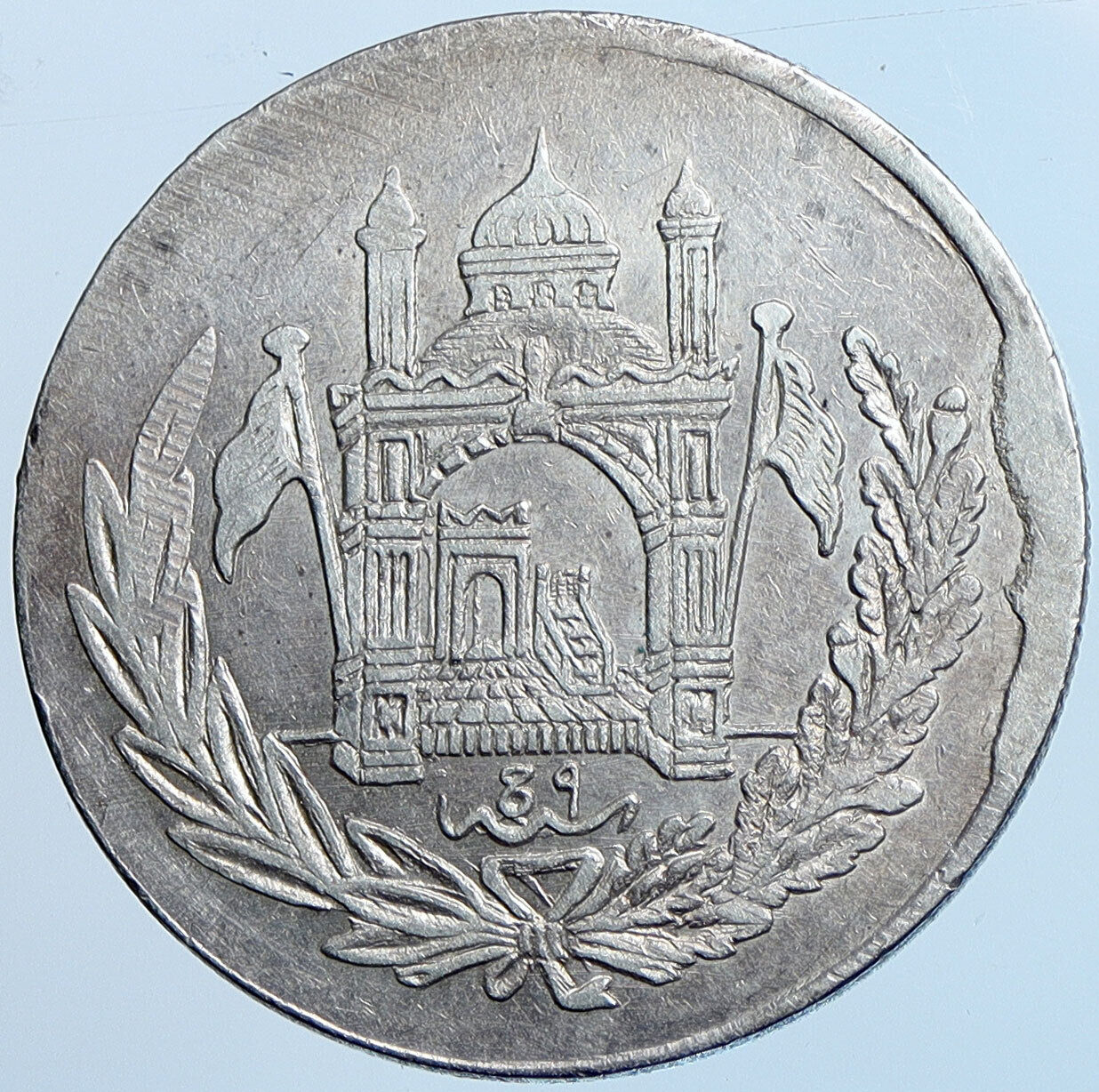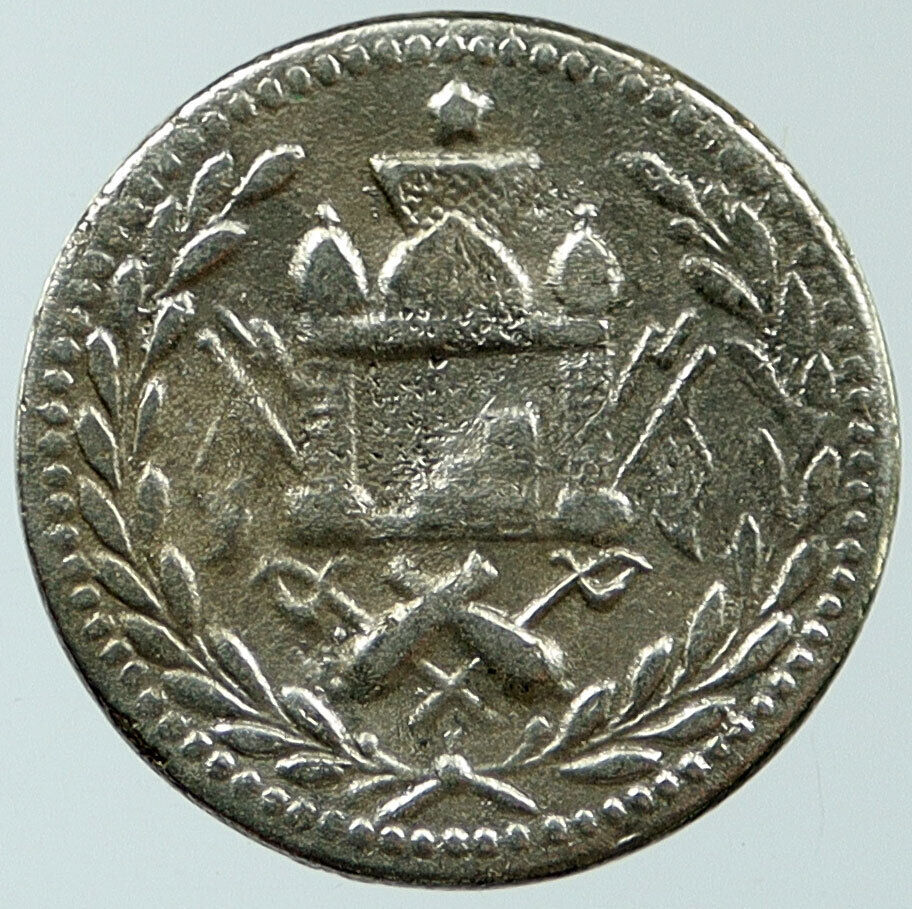|
Afghanistan
World Wildlife Fund and the International Union for Conservation of Nature
and Natural Resources
1978 Proof Silver 500 Afghanis 42mm (35.00 grams) 0.925 Silver (1.0409 oz. ASW)
Reference:
KM# 981
Certification: NGC
PF 68 ULTRA CAMEO 2863155-012
REPUBLIC OF AFGHANISTAN 1978,
Coat-of-arms of Republic of Afghanistan.
۵٠٠ افغانی , Siberian crane in pond, reeds around.
You are bidding on the exact item pictured, provided with a Certificate of Authenticity and Lifetime Guarantee of Authenticity.
Islamic Republic of Afghanistan, is a landlocked country located within south-central Asia. Afghanistan is bordered by Pakistan in the south and east; Iran in the west; Turkmenistan, Uzbekistan, and Tajikistan in the north; and in the far northeast, China. Its territory covers 652,000 square kilometers (252,000 sq mi) and much of it is covered by the Hindu Kush mountain range, which experience very cold winters. The north consists of fertile plains, whilst the south-west consists of deserts where temperatures can get very hot in summers. Kabul serves as the capital and its largest city.
Human habitation in Afghanistan dates back to the Middle Paleolithic Era, and the country’s strategic location along the Silk Road connected it to the cultures of the Middle East and other parts of Asia. The land has historically been home to various peoples and has witnessed numerous military campaigns, including those by Alexander the Great, Mauryas, Muslim Arabs, Mongols, British, Soviet, and since 2001 by the United States with NATO-allied countries. It has been called “unconquerable” and nicknamed the “graveyard of empires”. The land also served as the source from which the Kushans, Hephthalites, Samanids, Saffarids, Ghaznavids, Ghorids, Khaljis, Mughals, Hotaks, Durranis, and others have risen to form major empires.
 The political history of the modern state of Afghanistan began with the Hotak and Durrani dynasties in the 18th century. In the late 19th century, Afghanistan became a buffer state in the “Great Game” between British India and the Russian Empire. Its border with British India, the Durand Line, was formed in 1893 but it is not recognized by the Afghan government and it has led to strained relations with Pakistan since the latter’s independence in 1947. Following the Third Anglo-Afghan War in 1919 the country was free of foreign influence, eventually becoming a monarchy under King Amanullah, until almost 50 years later when Zahir Shah was overthrown and a republic was established. In 1978, after a second coup Afghanistan first became a socialist state and then a Soviet Union protectorate. This evoked the Soviet-Afghan War in the 1980s against mujahideen rebels. By 1996 most of Afghanistan was captured by the Islamic fundamentalist group the Taliban, who ruled most of the country as a totalitarian regime for over five years. The Taliban were forcibly removed by the NATO-led coalition, and a new democratically-elected government political structure was formed. The political history of the modern state of Afghanistan began with the Hotak and Durrani dynasties in the 18th century. In the late 19th century, Afghanistan became a buffer state in the “Great Game” between British India and the Russian Empire. Its border with British India, the Durand Line, was formed in 1893 but it is not recognized by the Afghan government and it has led to strained relations with Pakistan since the latter’s independence in 1947. Following the Third Anglo-Afghan War in 1919 the country was free of foreign influence, eventually becoming a monarchy under King Amanullah, until almost 50 years later when Zahir Shah was overthrown and a republic was established. In 1978, after a second coup Afghanistan first became a socialist state and then a Soviet Union protectorate. This evoked the Soviet-Afghan War in the 1980s against mujahideen rebels. By 1996 most of Afghanistan was captured by the Islamic fundamentalist group the Taliban, who ruled most of the country as a totalitarian regime for over five years. The Taliban were forcibly removed by the NATO-led coalition, and a new democratically-elected government political structure was formed.
Afghanistan is a unitary presidential Islamic republic with a population of 35 million, mostly composed of ethnic Pashtuns, Tajiks, Hazaras and Uzbeks. It is a member of the United Nations, the Organisation of Islamic Cooperation, the Group of 77, the Economic Cooperation Organization, and the Non-Aligned Movement. Afghanistan’s economy is the world’s 108th largest, with a GDP of $64.08 billion; the country fares much worse in terms of per-capita GDP (PPP), ranking 167th out of 186 countries in a 2016 report from the International Monetary Fund.
|









 The political history of the modern state of Afghanistan began with the Hotak and Durrani dynasties in the 18th century. In the late 19th century, Afghanistan became a buffer state in the “Great Game” between British India and the Russian Empire. Its border with British India, the Durand Line, was formed in 1893 but it is not recognized by the Afghan government and it has led to strained relations with Pakistan since the latter’s independence in 1947. Following the Third Anglo-Afghan War in 1919 the country was free of foreign influence, eventually becoming a monarchy under King Amanullah, until almost 50 years later when Zahir Shah was overthrown and a republic was established. In 1978, after a second coup Afghanistan first became a socialist state and then a Soviet Union protectorate. This evoked the Soviet-Afghan War in the 1980s against mujahideen rebels. By 1996 most of Afghanistan was captured by the Islamic fundamentalist group the Taliban, who ruled most of the country as a totalitarian regime for over five years. The Taliban were forcibly removed by the NATO-led coalition, and a new democratically-elected government political structure was formed.
The political history of the modern state of Afghanistan began with the Hotak and Durrani dynasties in the 18th century. In the late 19th century, Afghanistan became a buffer state in the “Great Game” between British India and the Russian Empire. Its border with British India, the Durand Line, was formed in 1893 but it is not recognized by the Afghan government and it has led to strained relations with Pakistan since the latter’s independence in 1947. Following the Third Anglo-Afghan War in 1919 the country was free of foreign influence, eventually becoming a monarchy under King Amanullah, until almost 50 years later when Zahir Shah was overthrown and a republic was established. In 1978, after a second coup Afghanistan first became a socialist state and then a Soviet Union protectorate. This evoked the Soviet-Afghan War in the 1980s against mujahideen rebels. By 1996 most of Afghanistan was captured by the Islamic fundamentalist group the Taliban, who ruled most of the country as a totalitarian regime for over five years. The Taliban were forcibly removed by the NATO-led coalition, and a new democratically-elected government political structure was formed. 




